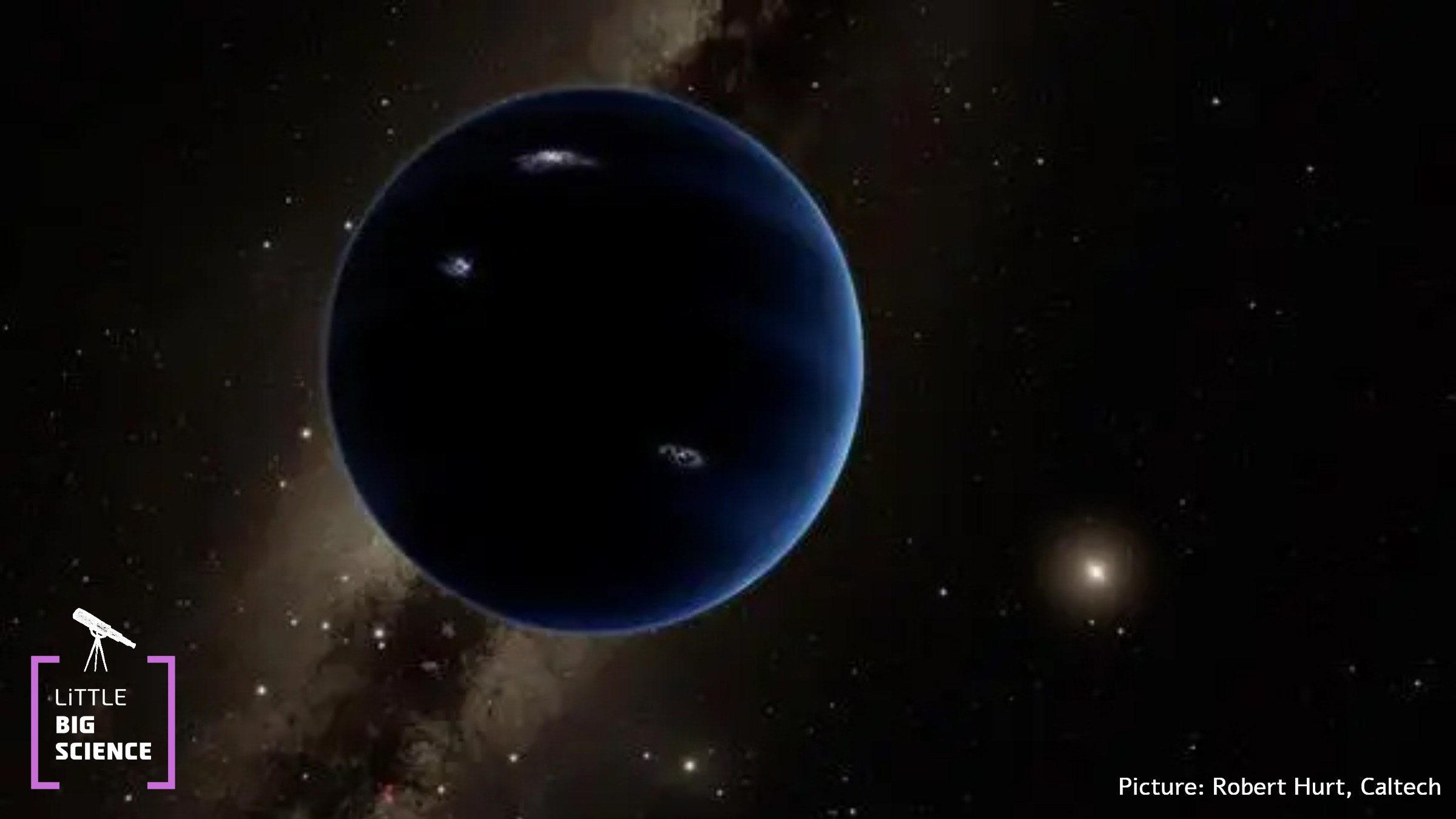
In the past 24 hours, the internet has been buzzing with reports about the possible discovery of a new planet [1], but what was actually discovered? How was the discovery made? In this post we’ll sort it out for you.
Advertisement
This post was written with the assistance of Yoav Landsman.
The outskirts of the Solar System:
We now know that Pluto, once considered a planet and since downgraded to a dwarf planet [2], is not the only large celestial body in this part of the Solar System. Other objects such as Eris and Sedna [3], comparable in size to Pluto, are also located in the same region. In addition to these bodies, the Kuiper Belt [4] is found here—a far larger version of the asteroid belt that likewise contains remnants from the Solar System. Far beyond the Kuiper Belt lies the Oort Cloud [5], which also harbors remnants from the Solar System’s earliest days.
Why, then, is a massive object suspected to exist in this area?
Thanks to Kepler’s laws [6] (and, indirectly, to Newton’s laws of motion [7]), we can model the planets’ orbits around the Sun. The simplest solutions, which neglect the planets’ mutual influences and relativistic effects, have accurately predicted their true paths. But is it always right to ignore the planets’ interactions? Not necessarily.
In 1846 Neptune was discovered [8], and its discovery was unique in that its existence had been predicted before it was ever observed. The prediction arose because Uranus’s orbit (then the most distant known planet) did not fit the simple Keplerian model, and suggested an additional planet beyond Uranus resolved the discrepancy (Uranus was far enough from Saturn that Saturn’s influence was negligible).
Back to the present: As more and more objects in the Kuiper Belt have been discovered, some of their orbits were found to deviate from the Keplerian model. Consequently, much like Neptune’s prediction, the existence of an additional, ninth planet has been proposed [9]; its orbit and size can explain the trajectories of these objects. The hypothesis gains additional support from its ability to account for bodies whose orbital planes are highly inclined—almost perpendicular—to the ecliptic (the plane of Earth’s orbit).
What do we know about this object?
It is important to stress that, so far, the evidence is purely circumstantial and the theoretical planet has not been observed by any telescope. Nevertheless, simulations allow us to infer [10] that it has a mass about ten times that of Earth and an average distance from the Sun roughly twenty times greater than Neptune’s. These parameters not only qualify the theoretical body as a true planet (rather than a dwarf planet) but place it in the category of Super-Earths—planets much larger than Earth yet not necessarily gas giants, i.e., likely rocky planets.
In summary, if researchers manage to confirm their claim [11] by aiming telescopes at the region where the new planet is expected to be, it will be a sensational discovery, as the last major planet was found 170 years ago (Pluto was discovered in 1930 but is no longer classified as a planet).
And now, we wait…
English editing: Elee Shimshoni
References:
[1] Selected publications from the web:
http://edition.cnn.com/2016/01/20/us/possible-ninth-planet/
https://www.washingtonpost.com/.../new-evidence-suggests.../
http://www.independent.co.uk/.../planet-9-secret-dark...ht
http://time.com/4184942/planet-9-new-pluto-solar-system/
[2] Pluto's demotion
[3] Further details on dwarf planets in general and in the outer Solar System in particular
[6] Kepler’s laws
[9] An article about the additional planet on the Planetary Society’s website







